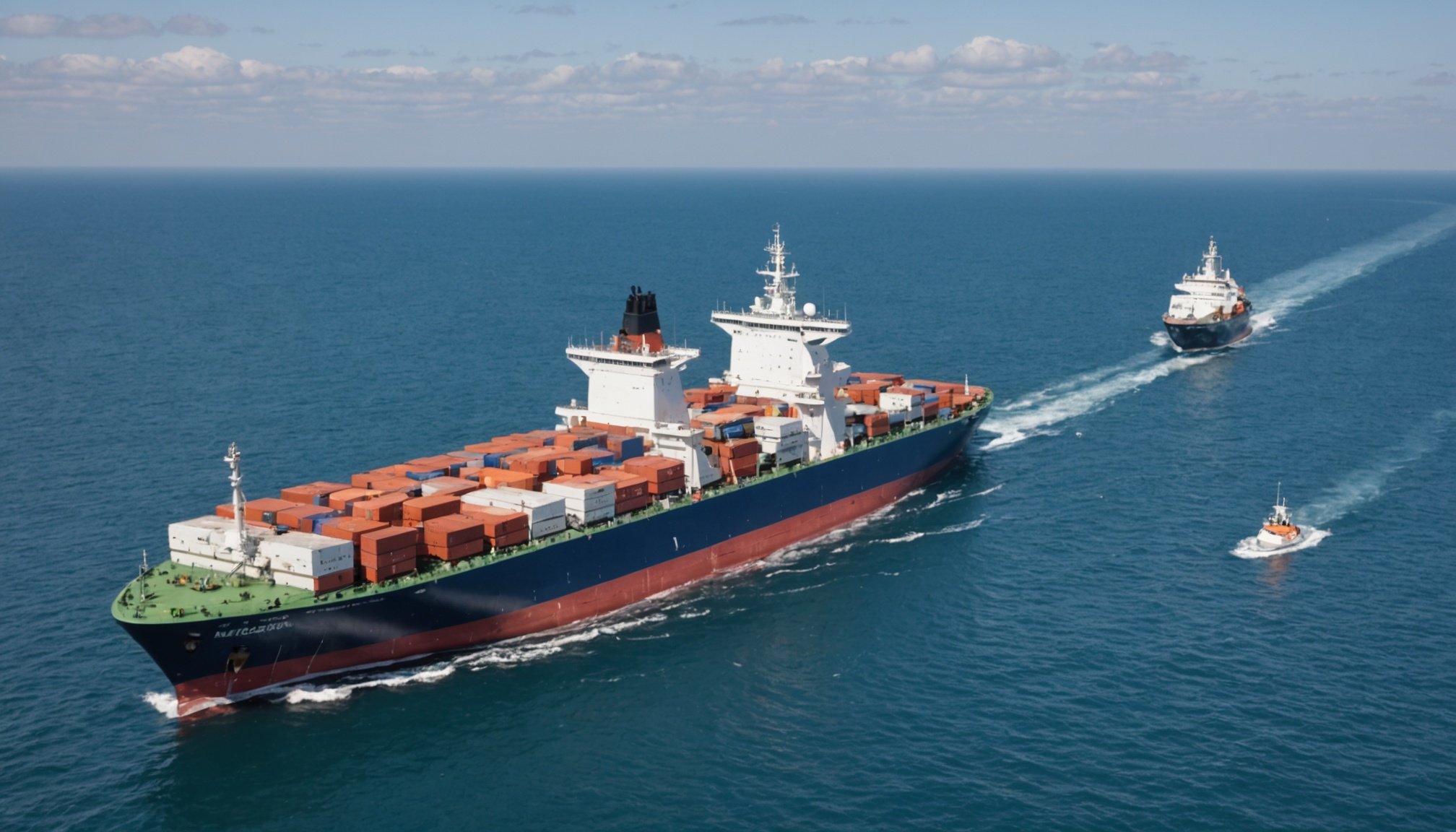Overview of Microsatellite Technology
Microsatellite technology has revolutionised the way we approach maritime monitoring. These small satellites, typically weighing under 100 kilograms, offer a more flexible and cost-effective solution compared to traditional, larger satellites. By focusing on specific tasks, microsatellites provide precise and efficient data collection. Their compact size allows for easier and more affordable deployment, making them ideal for regions requiring constant observation, like vast oceanic expanses.
Unlike traditional satellites, microsatellites can be launched in constellations, allowing for continuous coverage and real-time data acquisition. This is particularly advantageous for maritime monitoring, where time-sensitive information is crucial for activities such as navigation and emergency response. Such advancements ensure the industry stays informed and adaptive to changing conditions at sea.
Additional reading : How Is Climate Change Impacting Urban Planning in the UK?
Recent innovations in microsatellite technology have enhanced these capabilities further. Improved sensors and data processing algorithms now allow for higher data collection and analysis efficiency, resulting in more accurate and timely insights. These advancements not only bolster maritime safety and security but also enhance resource management, making microsatellites an indispensable tool for modern maritime operations. The constant evolution of this technology underscores its pivotal role in the future of maritime monitoring.
Benefits of Microsatellite Technology for Maritime Monitoring
Microsatellite technology offers numerous benefits to maritime monitoring, transforming how data is collected and analysed. Enhanced data collection and analysis efficiency stand at the forefront, allowing for more targeted insights into maritime environments. These small satellites excel in capturing precise information, enabling stakeholders to make informed and strategic decisions with increased confidence.
In the same genre : How Can You Incorporate British Design into Your Home Décor?
One of the standout features of microsatellites is their cost-effectiveness. Compared to their larger counterparts, they are cheaper to design, manufacture, and launch. This affordability has opened doors for broader participation in space-based maritime observation, empowering smaller organisations to access critical data without hefty investments.
Microsatellites’ real-time monitoring capabilities have significantly impacted decision-making processes. In fast-paced maritime environments, timely data is essential. The ability to receive continuous updates ensures rapid responses to dynamic conditions, enhancing navigational safety, resource allocation, and emergency interventions. This real-time feature gives maritime operators a competitive edge by leveraging immediate insights.
By integrating these micro marvels into maritime frameworks, the industry witnesses a paradigm shift tilted towards precision, accessibility, and agility. As a result, the scope for improving safety standards and optimising resource management grows, further solidifying microsatellites’ pivotal role in maritime operations.
Case Studies of Microsatellite Applications in the UK
Microsatellite technology is transformative for UK maritime monitoring, offering remarkable efficiency and precision. In the shipping industry, microsatellites have significantly streamlined logistics. Their real-time data capabilities allow for enhanced navigation, timely route adjustments, and fuel optimisation, leading to cost savings and increased efficiency.
For environmental monitoring and fisheries management, microsatellites provide invaluable data on oceanic conditions. They track critical indicators affecting fish stocks, such as sea surface temperature and chlorophyll levels. These insights aid in sustainable fishing practices and help enforce regulatory compliance.
In national security, microsatellites enhance surveillance and situational awareness. They enable the UK to monitor maritime borders effectively, detect illegal activities, and respond swiftly to potential threats. Their ability to provide high-frequency updates ensures that security forces are well-prepared to tackle maritime challenges.
Some successful implementations include partnerships with private firms and government bodies that leverage microsatellite data for strategic decision-making. These collaborative efforts maximise the technology’s potential, making the sea safer and more secure. Through these practical applications, microsatellites have become an integral component of the UK’s modern maritime strategy.
Challenges Facing Microsatellite Integration in Maritime Monitoring
Despite the promising benefits of microsatellite technology in maritime monitoring, several challenges hinder its full integration. Technically, microsatellites may face limitations in terms of data accuracy. Although they offer enhanced real-time capabilities, precise data collection can be hampered by environmental hazards or signal interference, affecting reliability in certain situations.
Additionally, regulatory and compliance hurdles pose significant concerns. The maritime sector must navigate a complex landscape of international and national regulations governing satellite operations. Ensuring compliance with these legal frameworks requires both time and resources, potentially delaying the integration process.
Stakeholder resistance is another barrier to widespread adoption. Traditional maritime monitoring systems have long been entrenched, making some organisations hesitant to switch to newer technologies. Overcoming this resistance necessitates targeted educational initiatives to highlight the advantages of microsatellites and dispel misconceptions.
Collaboration between tech companies and maritime authorities is essential to address these issues. By fostering an environment of communication and cooperation, stakeholders can work together to develop solutions that ensure seamless integration. As stakeholders become better informed, the transition to microsatellite technology promises to become smoother, allowing maritime operations to benefit fully from these technological advancements.
Future Trends in Maritime Monitoring Technologies
Microsatellite technology is set for significant advancements, continuing to revolutionise maritime innovations. Experts predict a deeper integration of these satellites with other emerging technologies. For instance, combining microsatellites with Artificial Intelligence (AI) can lead to more sophisticated data analysis methods, providing sharper insights into maritime environments. AI can automate the interpretation of satellite data, enabling quicker decision-making during maritime operations.
The Internet of Things (IoT) is another exciting frontier. By linking microsatellites with IoT devices, the maritime industry can achieve unparalleled real-time monitoring. This integration allows seamless data flow between ocean-based sensors and satellites, enhancing the timeliness and accuracy of maritime analyses. Such advancements potentially transform navigation, resource management, and security protocols.
Regulatory frameworks surrounding satellite technology are also expected to evolve. Anticipated changes aim at supporting innovation while ensuring compliance remains manageable for all stakeholders. These frameworks could influence how swiftly new microsatellite applications are adopted by the industry.
As technology progresses, the maritime sector is poised to embrace these trends, paving the way for futuristic, efficient maritime operations with robust reliance on microsatellite-based solutions.
Expert Opinions on the Impact of Microsatellites
The maritime sector stands on the brink of transformation with the advent of microsatellite technology. Industry experts predict a substantial impact on future maritime innovations. These small yet powerful satellites offer essential data insights, enhancing decision-making processes and promoting sustainable practices. The precision and efficiency of microsatellites allow maritime operators to optimise routes, thus significantly reducing fuel consumption and emissions—a critical component in advancing maritime sustainability.
Expert analysis highlights the potential economic benefits of adopting this technology extensively. By lowering operational costs and improving resource management, microsatellites are viewed as catalysts for economic growth in the maritime sector. Industry leaders particularly emphasise the importance of integrating microsatellites with emerging technologies like AI and IoT to elevate maritime operations to unprecedented levels of efficiency and innovation.
Additionally, expert insights suggest that the role of microsatellites in maritime monitoring will expand, driven by the need for more adaptive responses to environmental and navigational challenges. Perspectives gathered from various stakeholders in the industry validate the critical importance of continued investment and research in microsatellite technology. With their profound impact, microsatellites are poised to reshape the landscape of maritime operations sustainably and effectively.

